|
This post contains Amazon affiliate links. Happy Valentine's Day, dear readers! I'm not typically one for Valentine's Day (although I've written about it here and here), but this year we decided to celebrate a friend's birthday with a Valentine's Day-themed tea party! I will admit the idea started with cute pink tea cups, spoons, and tea bag rests I saw at Target, and it kind of snowballed from there. But if you've been a longtime reader you'll know how much I enjoy designing and putting on tea parties (see: here, here, and here). I have an addiction to vintage dishes and linens, so it only seems fair that I drag them out every now and again. This tea party does not have any particular historical recipes attached to it, although every time I throw one I feel I am following firmly in the footsteps of my home economics predecessors, many of whom enjoyed a themed party even more than I do. Designing Your Tea PartyHalf the fun of throwing parties is dreaming them up and bringing together all the various accoutrements that make it nice. I've mentioned the pink teacups and saucers, golden flower spoons, and heart-shaped tea bag rests already. Those were the catalyst. But I also pulled from my collection of vintage pretties, all of it thrifted: a cherry blossom tablecloth, my favorite lace-edged milk glass platter and coordinating dessert plates, a gold-edged glass platter and coordinating luncheon plates, gold-rimmed etched highball glasses, vintage martini glasses, a beautiful cut glass footed compote I picked up recently, and one of my many milk glass vases for two bunches of fresh tulips. I did splurge on a few more things - I got some cute Valentine's Day decorations; a garland of felt hearts for the living room and a table runner for the coffee table. A set of heart-shaped cookie cutters in a variety of very useful sizes. My favorite purchase was a set of beautiful pink glass nesting bowls rimmed in gold. We only used one bowl for the tea party, but I love them so much. And the one that got the most comments was this rose-shaped ice cube tray, which turned grapefruit juice into gorgeous icy roses. I probably could have used more, but much of my milk glass got put away last Christmas and is now up under the eaves. One of my spring cleaning projects is to organize all my totes of spare dishes and decorations and put them all in the more easily-accessible basement, clearly labeled, so I can find things and use them more often. If you are in search of your own tea party collection, my best advice is to buy what you love, and damn the naysayers. My second-best advice is to buy things that coordinate with a variety of themes. Which is why I love milk glass so much, because it knows no season, and white dishes can always be spruced up with special touches of color. What every tea party needs:
Of course the most important ingredient for a tea party is at least one guest! Tea parties are always better with conversation. Menu planning is also a great deal of fun for me, and I love the challenge of coming up with something new each time I throw a party, alongside tried-and-true recipes. For this party, the tried-and-true recipe was for my Russian-style pie crust, which was used for both the savory pie and the letter cookies. The new was the vegetarian "chorizo," which was a riff on my lentilwurst recipe, and which turned out VERY well! The vegetable flower pie I knew would work in theory, but the execution was more difficult than I expected. If I did it again, I would definitely want a Y-style vegetable peeler like this one for the sweet potatoes. Valentine's Day Tea Party MenuFIRST COURSE: Savory Vegetable Flower Pie Heart Shaped "Chorizo" Sandwiches Hot Pink Salad SECOND COURSE: Strawberry Rhubarb Pie a la Mode Love Letter Cookies Red Fruit Salad BEVERAGES: Ice water Grapefruit Mocktail Cherry Blossom or Valentine's Day Tea Sadly my time these days is far more limited than it used to be, so my dreams of an almond cake with rose petal jam filling, lavender shortbreads, rose meringues, and other tasty treats fell victim to my schedule. Still, although some of these were a struggle, I was delighted in how they turned out. Normally I would make these separate posts, but for you, I'll lump all the recipes into one. The only thing that was store bought was the pie, which was purchased from a local farm who makes the best pies. And since our birthday girl loves pie more than cake, that was her birthday treat, in addition to the homemade ones. Savory Vegetable Flower Pie RecipeThis flavor combination sounds unusual, but it's delicious. Crust: 1 stick butter 1/4 pound fresh ricotta or farmer cheese 1 cup flour Filling: 1 cup ricotta 1/2 cup feta garlic salt dried thyme Topping: sweet potato small shallots roasted red pepper Preheat oven to 350 F. Cream softened butter and ricotta, then stir in 1 cup flour. Knead well and let rest. Whirl the ricotta and feta to blend and then add seasonings. Peel the sweet potato and cut into paper-thin slices. Peel the shallots cut off the tops, and then cut through them lengthwise but not through the root end. Cut multiple times to make "petals." Then trim the root end without cutting all the way through. Roll the dough out thinly and drape in a pie plate. Fill with ricotta filling, then arrange sweet potato slices into roses, add the shallots and spread the "petals," and then fill any extra spaces with slices of roasted red pepper rolled into rosebuds. Trim pie crust and crimp. Use remaining crust to cut out "leaves" and bake separately. Bake pie 30-40 mins or until sweet potatoes and shallots are cooked through and crust is golden brown. Vegetarian Lentil "Chorizo" RecipeThis recipe is a riff off my lentilwurst revelation. It turned out splendidly. 1 cup red lentils 1 1/2 cups water 1/4 cup butter (or olive or coconut oil) 1 small onion 1 red bell pepper 2 teaspoons smoked paprika 1 teaspoon chili powder 1 teaspoon garlic powder 1/2-1 teaspoon garlic salt 1/2 teaspoon oregano 1/4 teaspoon cumin 1/4 teaspoon black pepper Combine the lentils and water in a small stockpot. Bring water to a boil, then reduce heat and simmer 20ish minutes, or until the water is absorbed and the lentils are very soft. Peel the onion and seed the pepper, then mince very finely or whirl in a food processor until finely cut. In a stock pot, melt the butter over medium heat and add the onion and pepper. Cook until the butter is mostly absorbed and the vegetables very tender. Add the spices and lentils and cook to combine. When fully blended, taste and add more salt if needed. To make sandwiches, thinly slice white bread and cut into heart shapes, then spread with the lentil filling. Pink Salad RecipeI like to have something a little lighter for tea parties, usually a salad. But of course for Valentine's Day I didn't want any-old green salad! Plus, one of the challenges I set for myself was to keep this at least partially seasonally-appropriate. So this was my answer. 1/4 head red cabbage 8 red radishes 1/4 cup pickled red onion salt olive oil lemon juice Finely shred the cabbage and slice the radishes paper-thin. Toss with salt and let rest, then add a little olive oil and lemon juice. You can make this in advance if you want it to be extra-pink and slightly less crunchy, but be forewarned that the purple juices will stain just about everything, so eat carefully! Love Letters Cookie RecipeI'll admit - I saw this on Pinterest and thought it was too cute. I used my fool-proof ricotta pie crust instead of traditional butter crust, and while delicious, the letters did puff up a bit in the oven. Plus those little hearts are a pain to cut out by hand! 1 stick (1/4 cup) butter 1/4 pound ricotta or farmer cheese 1 cup flour cherry jam (I like Bonne Maman) Cream butter and ricotta and stir in flour. Knead well until combined. Roll out very thin and cut into squares. Place a teaspoon of jam in the center, then fold up one side and the other two to make an envelope. Add a heart cut out of crust to keep the edges from popping up. Bake at 350 F on parchment paper for 15-18 minutes, or until golden brown. Grapefruit Mocktail RecipeThis is one of my favorite mocktail recipes and it is dead easy, you ready? 1 part grapefruit juice 1 part gingerale And that's it! I like to use Simply Grapefruit, as I think it has a nice balance of sweetness and bitterness, but you could use any kind. The combination tastes so much more sophisticated than it is - not too sweet, not too bitter, not too bubbly, and curiously addictive for the adult palate. For folks who don't drink alcohol, it's a great alternative to a mixed drink that isn't sugary-sweet. Selecting TeasTea parties traditionally feature just black tea, but as a non-traditional person and someone who doesn't enjoy a lot of caffeine, I don't usually drink black tea. However, since this was a special event, I decided to bring out some special teas just for Valentine's Day. Harney & Sons is a New York-based tea producer (and therefore local for me) who makes delicious blends. I did a big order last year around this time and got their "Valentine's Day" blend for free. I was skeptical at first, but it's a delicious blend of black tea, chocolate, rose, and other fruity flavors. Curiously addictive. The birthday girl is a big fan of green tea, so when I saw the Cherry Blossom variety, which is a mix of green tea with cherry and vanilla flavors, I decided to get that as well. Both were excellent and did not need any sweetener or milk to accompany the rest of the menu. All in all it was a delightful afternoon. The birthday girl was happy, the husband was happy, and I was happy! We went for a post-party walk in delightful weather and did a little shopping at a nearby town, got caught in a rainstorm, then headed for home. Later that night we ran some more errands and I treated myself to some adorable jigsaw puzzles, because they remind me of my mom and I need some non-screen time activities! They've been fun, but man my back is not up for too much hovering over a table searching for pieces!
It always gives me joy to built a beautiful table for family and friends. My best Valentine's Day present to myself! How are you celebrating?
1 Comment
Happy Valentine's Day, Food Historian friends!
If you spend way too much time on social media (like me), you've probably seen this meme crop up in the weeks before Valentine's Day. I think I started seeing it in January! But it piqued my interest, so here we are. What is it about Sweethearts (a.k.a. Conversation Hearts) that inspires to much hatred? As far as I can tell, the meme was created by Molly Hodgdon in 2019, and while it got some attention on Twitter, it wasn't until someone screenshotted it (without attributing Molly, sadly - cite your sources, people!) that it started to go viral on social media.
NECCO, which makes the very similar Necco wafers, is the acronym of the New England Confectionary Company. NECCO was formed in 1901 as a conglomeration of multiple regional confectionary/candy companies, the oldest of which was Chase and Company, founded in 1847 by British pharmacist Oliver R. Chase and his brother Silas Edwin, both based in Boston, Massachusetts. That year, Oliver apparently patented a machine designed to cut out candy lozenges (although no one can seem to find the original patent), and the pair went into business producing sugar-and-gum lozenges in a circular shape.
Although several sources claim the Union Army supplied soldiers with "hub wafers" during the American Civil War, I can find no primary source references, and neither could Heather Cox Richardson, so take that claim with a very large grain of salt. It is possible Union soldiers consumed the candy wafers, but unlikely they were issued by military supply, which was pretty decentralized at that point anyway. "Hub" was a nickname for Boston, and the phrase "hub wafers" shows up mostly in newspapers in the 1910s, right when NECCO was heavily advertising. "Hub wafers" were the phrase used to get around the use of the brand-name Necco.
Boston was a major candy-making center for one primary reason - ready access to sugar. Since its founding, Boston had been a major port for the Triangle Trade - enslaved Africans in the Caribbean labored on sugar cane plantations - the sugar and molasses were shipped to Boston, where the sugar was further refined and the molasses made into rum - and then the rum was used as a bargaining chip or payment taken on Boston sailing ships to the coast of West Africa, where people were captured and enslaved, and delivered to the Caribbean, hungry for slave labor as the brutal conditions dramatically shortened the lifespans of the enslaved. The ships picked up sugar and molasses and headed north again.
Even after the abolition of slavery, Boston remained a primary shipping hub for sugar, and therefore candy. Second NECCO company Ball & Forbes was founded in Boston in 1848, and Bird, Wright, and Company in 1856. The three companies consolidated in 1901 into NECCO. At any rate, the wafers (not to be confused with wax wafers used to seal envelopes for sending through the mail), got an upgrade in 1866, when another Chase brother - Daniel Chase - created "conversation candies" - which may or may not have been heart shaped, but had sayings printed on the candies (I think - sources conflict). I've been hard-pressed to determine what exactly these looked like, but "conversation hearts" in reference to candies show up as early as 1859 in newspapers. The original candies were larger than today's, and not all were in the shape of hearts - some were shaped like horseshoes, pocket watches, postcards, and seashells, among others.
Even by 1907 the "conversation lozenge" was considered old-fashioned. In an article entitled "Fads that Were: The Conversation Lozenge," The Brooklyn Citizen writes:
"First Aid to Making Love" is what the conversation lozenge really was, hence its extremely long sway in candy stores. It is estimated that the conversation lozenge has lasted fifty years, and it isn't so dead yet that the candy factories have stopped making them. A nickel's worth of conversation lozenges made the most freckled, bashful swain the candy kid. Were you too timid to express your feelings to Luella, there was a subtle, painless way of doing it. You asked her if she liked candy. Sure. You passed her a lozenge inscribed: "It's a Pleasant Day." She admitted it was, and ate the lozenge. Would she have more candy? Would she? You slipped her one, "You are Fair as the Lily." She couldn't deny that, either. As thins warmed up you pressed on her in succession, "My Thoughts Are of Thee," "Sweets to the Sweet," "The Ivy Clings to the Oak," "Your Face Haunts Me," "May I Dare?" "I Love Only Thee" and "Kiss Me." After that you didn't need any more conversation lozenges, except to let her draw them from the bag at random. You could afford to laugh when she brought out one labeled "I Love Another." You knew better than that at this stage of the game. Ask your pa and ma about the conversation lozenge. To see examples of what the original conversation lozenges looked like, check out this collection from the Genesee Country Village & Museum in Mumford, NY.
Most of us today probably also consider conversation hearts old-fashioned, but more likely because we encountered them in grade school rather than associating them with the 19th century! Those self-contained, inexpensive, non-melting boxes of candy were too easy for parents to purchase for the days when you had to get a Valentine for everyone in the class. But the texture and flavor is definitely a hallmark of centuries past.
And, of course, that's what the meme at the start of this article is referencing, isn't it? "Wild clayberry" aside, the original flavors of Necco Sweethearts were quite 19th century indeed - peppermint and wintergreen only.
At some point the flavors and colors were expanded. It's not clear what flavors were instituted when. Some sources indicate the original flavors included banana, cherry, and wintergreen. Another source lists wintergreen, orange, lemon, banana, grape, cherry, and blue raspberry, but clearly that last one doesn't date to the early 20th century. These flavors read as more modern, as opposed to Necco Wafers, whose original flavor lineup was wintergreen, lime, clove, orange, chocolate, lemon, cinnamon (the white ones, curiously, and wintergreen was pink), and licorice. Talk about 19th century flavors. Necco did also make all-chocolate, all-peppermint, and all-cinnamon rolls of wafers early on.
In the 1960s, Brach's Candy Company got in on the conversation hearts game - their recipe is a bit softer but the flavors are nearly identical to Necco Sweethearts - lemon, banana, cherry, grape, orange, and yes, wintergreen. Gotta keep the minty roots intact. It's not clear when precisely Sweethearts became so sharply aligned with Valentine's Day, but given the candy's long romantic history, it's not surprising. Necco continued to consolidate throughout the 20th century - buying up candy companies right and left. But eventually the size became untenable and Necco went bankrupt in 2019, and production of Sweethearts and Necco wafers, among other candies, briefly ceased. The company was acquired by Spangler Candy Company in 2020 and they managed to crank out an uneven production, despite the pandemic and manufacturing woes. Spangler also saved Mary Jane candies from extinction. Today, Sweethearts are back in business. The meme begs a larger question than I think most people would consider: What role does nostalgia play in our food consumption choices? Do people buy and eat (or not eat) Sweethearts and other nostalgic candy simply because they really love the taste/texture? Or do they simply evoke pleasant memories of childhood? Or perhaps they represent a childhood or some validation never fully acquired? I would argue it's probably some combination of all of the above. Like smell, taste can be a powerful trigger for memories - happy or otherwise. So if you grew up associating Sweethearts with Valentine's Day, you might want to continue that association, or pass on the tradition to a new generation. But as we've discussed before (here and here), I'm a firm believer that on person's "gross" can be another person's "delicious." For me, while Sweethearts aren't my favorite, they're not awful either. But if I'm going to consume chalky historic candies, I'm going to sit and eat a whole can of creamy butter mints (which we called dinner mints, and which were a feature of nearly every wedding reception I attended as a child), rather than a box of Sweethearts. Although my mom's homemade cream cheese mints (also a feature of weddings, molded into pink roses and white bells and the peppermint flavored ones were green leaves) would be even better. But then they're not chalky and storebought, and wedding/dinner mints are a tale for another blog post. What do you think? Are Sweethearts delicious? Nostalgic? Disgusting? Weigh in in the comments, and Happy Valentine's Day to everyone, regardless of your relationship status.
The Food Historian blog is supported by patrons on Patreon! Patrons help keep blog posts like this one free and available to the public. Join us for awesome members-only content like free digitized cookbooks from my personal collection, e-newsletter, and even snail mail from time to time! Don't like Patreon? Just leave a tip!
Happy Valentine's Day, everyone! Although Valentine's Day fell on a Friday this year, I had the day off from work (because I worked last Sunday). But despite that, I had a fairly lazy day. Slept in, didn't get out of jammies until noon, and then ran errands all afternoon before completing our annual Valentine's Day rite - NOT going out for dinner. Yes, that's right. For the first few years of our coupledom, my husband and I got gussied up and tried fancy restaurants with special Valentine's Day meals. It was incredibly expensive and not a great experience. So, a few years ago, I decided that at-home meals were best. Of course, typical turn-of-the-last-century holiday meals were often based around a color theme, thanks to home economists. But rather than go the route of pink-tinted mayonnaise and radish roses, I decided that the perfect way to keep things to a very Valentine-friendly red-and-white color scheme was to make a heart-shaped pizza, with red and white heart-shaped toppings. I won't give a recipe, largely because I used store-bought dough and store-bought sauce to make it. But I will say prepare to use a whole pound of shredded mozzarella and set your oven to 450 or 475 F for the best pizza baking experience. My last word of advice? Don't grease your pan - use semolina flour to dust the pan and/or your work surface - it makes a lovely crunchy crust, and is traditional. Years ago Chad got me a pizza stone and peel, and although I've only used it a few times, I thought I would give it another go. I normally make two pizzas on two sheet pans and it works great. I always make two pizzas because they're never as big as the kind you get from a pizza parlor and we like to have leftovers. Lots of semolina flour was in order to make wiggling the raw dough off of the peel and onto the hot stone work, but work it did. The only downside? Because the stone is smaller than a sheet pan, I wasn't able to make the pizza as thin as we like it - and the crust really puffed up. Which wasn't bad, I just prefer it the other way. Once we chowed down on some pizza, I decided to bake a cake. But, because I'm me and typically lazy, I thought Lazy Daisy Cake would be perfect. But also because I'm me, and I can never resist tinkering with recipes (and because I'd bought several quarts of fresh strawberries), I added a layer of strawberries to the bottom of the pan. In retrospect, should have mixed them in, but still delicious how it turned out. I first learned of Lazy Daisy cake from Marion Cunningham's lovely cookbook, Lost Recipes: Meals to Share with Friends and Family, but it's a 1920s-era staple. I made it for my 1920s Garden Party a few years ago and it was a big hit. But! a 9x13" pan only went so far with that crowd, and people love it, so always make more than you think you'll need. Lazy Daisy Cake is a type of hot milk cake - a type of sponge cake that combines whole whipped eggs with baking powder and hot milk to give it a lovely lift and a springy texture. The "lazy" part is two things - first is you don't have to separate the eggs before you whip them (although the mixing is anything but "lazy," especially if you are stubborn and do it by hand like I do). Second is the topping - a mixture of butter, brown sugar, shredded coconut, and heavy cream that gets popped under the broiler to caramelize before serving. Which is far easier than making a frosting and then frosting a layer cake. It's certainly not as pretty as a frosted layer cake, but it tastes fantastic - well worthy of any Valentine. Of course, if you'd like this the pure way - leave out the strawberries, or serve them cold on the side. My husband likes this with liquid cream AND whipped cream (and, sometimes, so do I - it's that dairy farmer heritage), but just about any dairy topping is delicious. My version is based on Marion's, but doubled. Lazy Daisy Strawberry Cake4 eggs 2 teaspoons vanilla 2 cups sugar 2 cups all-purpose flour 2 teaspoons baking powder 1/2 teaspoon salt 1 cup milk 1 stick (1/2 cup) butter (2 tablespoons, then 6 tablespoons) at least 1 quart fresh strawberries (optional) 6 tablespoons brown sugar 4 tablespoons heavy cream 1 cup shredded unsweetened coconut (or finely chopped pecans) Preheat the oven to 350 F. Butter and flour a 9"x13" metal pan (do NOT use glass!). Beat eggs and vanilla until thick, then gradually beat in sugar until very thick. Add flour, baking powder, and salt all together, then stir into egg mixture until smooth and thick. Heat milk and 2 tablespoons butter in a saucepan over medium heat until butter is just melted. Meanwhile, wash, hull, and cut strawberries into quarters (cut the big ones into sixths). When butter is melted into milk, pour hot into batter and stir well until fully combined. Either stir in strawberries, or place in bottom of pan and pour batter over. Bake immediately for 30-45 minutes or until top is golden brown and springs back when touched. While cake is baking, take the saucepan from the milk mixture and add remaining butter (6 tablespoons), brown sugar, cream, and coconut (or pecans) and heat until butter and sugar are melted, then remove from heat. Do not boil. When cake is done, turn off oven and turn broiler on low. Spread the top of the hot cake with the coconut mixture, then broil for about a minute (watch it - it burns easily) until the coconut mixture caramelizes. Remove from the oven and let cool before serving with the dairy topping (liquid cream, whipped cream, milk, ice cream) of your choice. Or eat plain. What did you do for Valentine's Day? Did you eat at home and cook or bake something special? Tell me in the comments! And, as always, if you liked this post, consider becoming a member or joining us on Patreon. Members and patrons get special perks like access to members-only content. |
AuthorSarah Wassberg Johnson has an MA in Public History from the University at Albany and studies early 20th century food history. Archives
July 2024
Categories
All
|
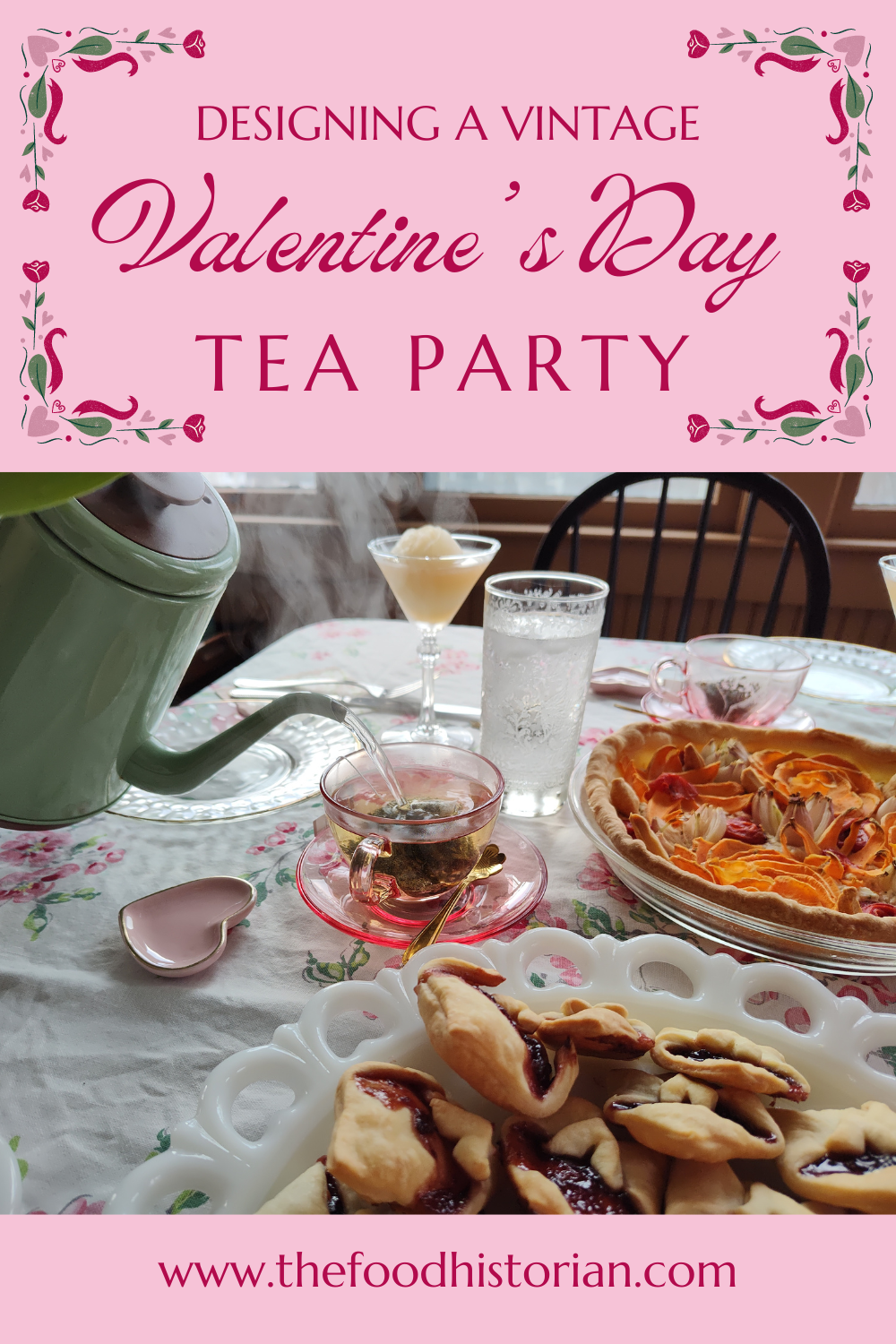
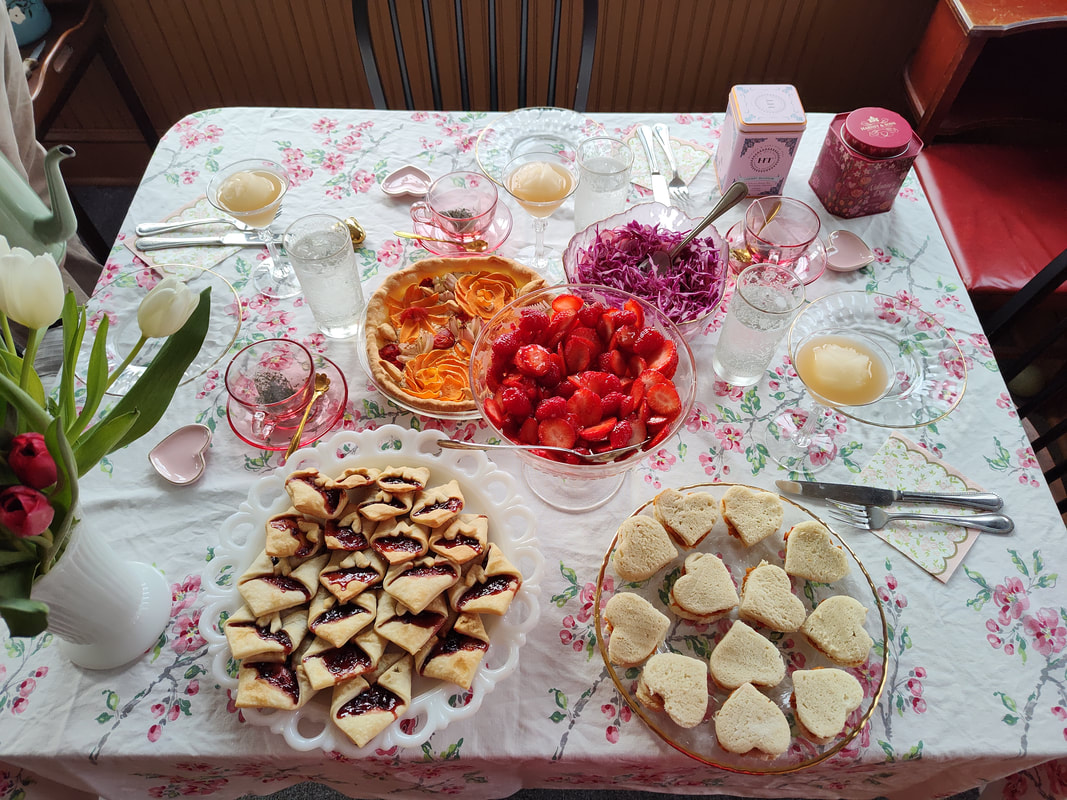
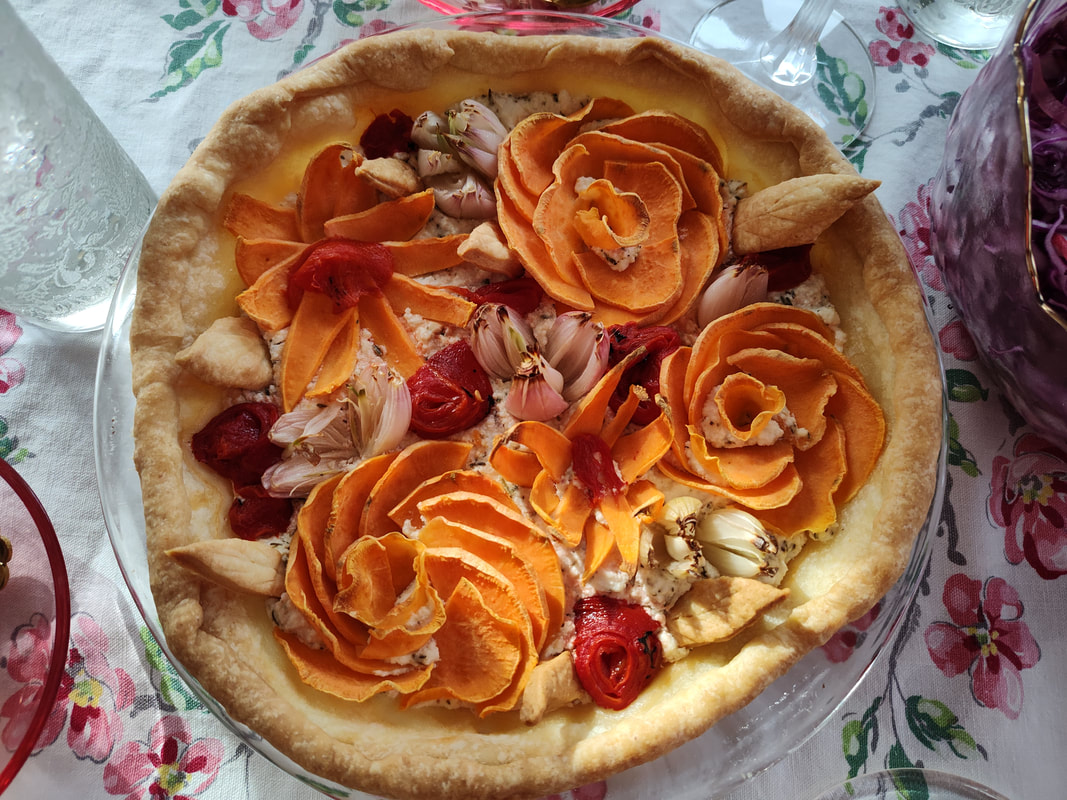
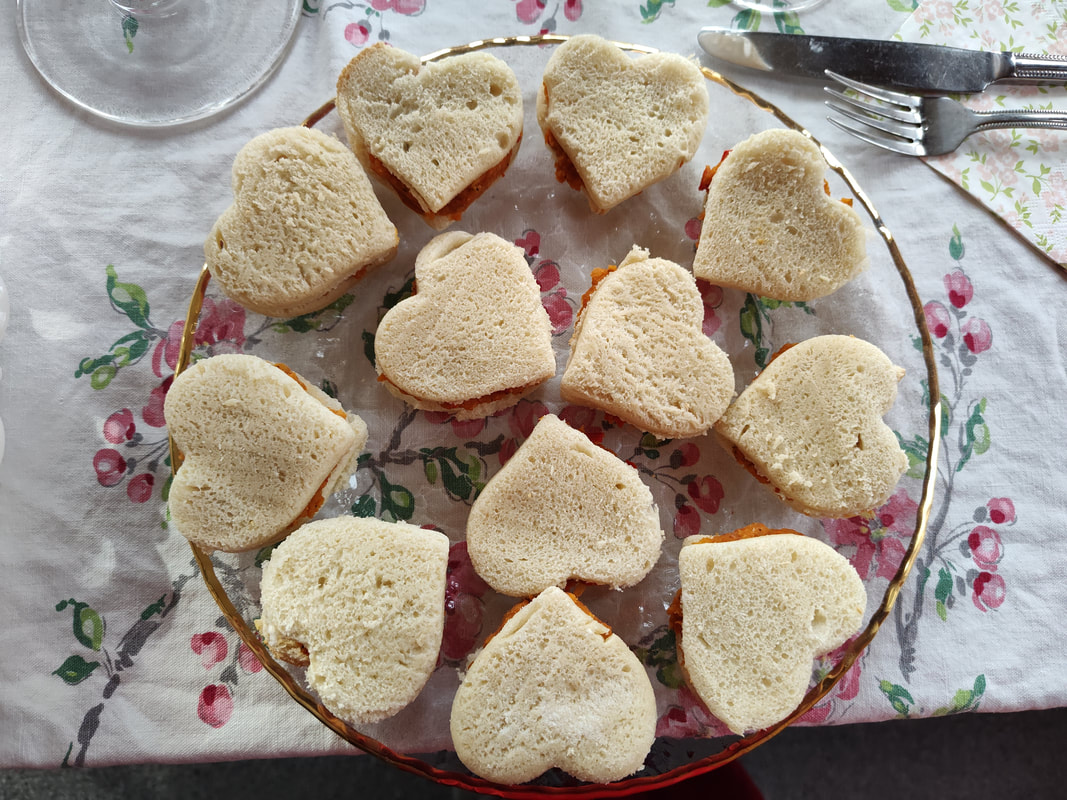
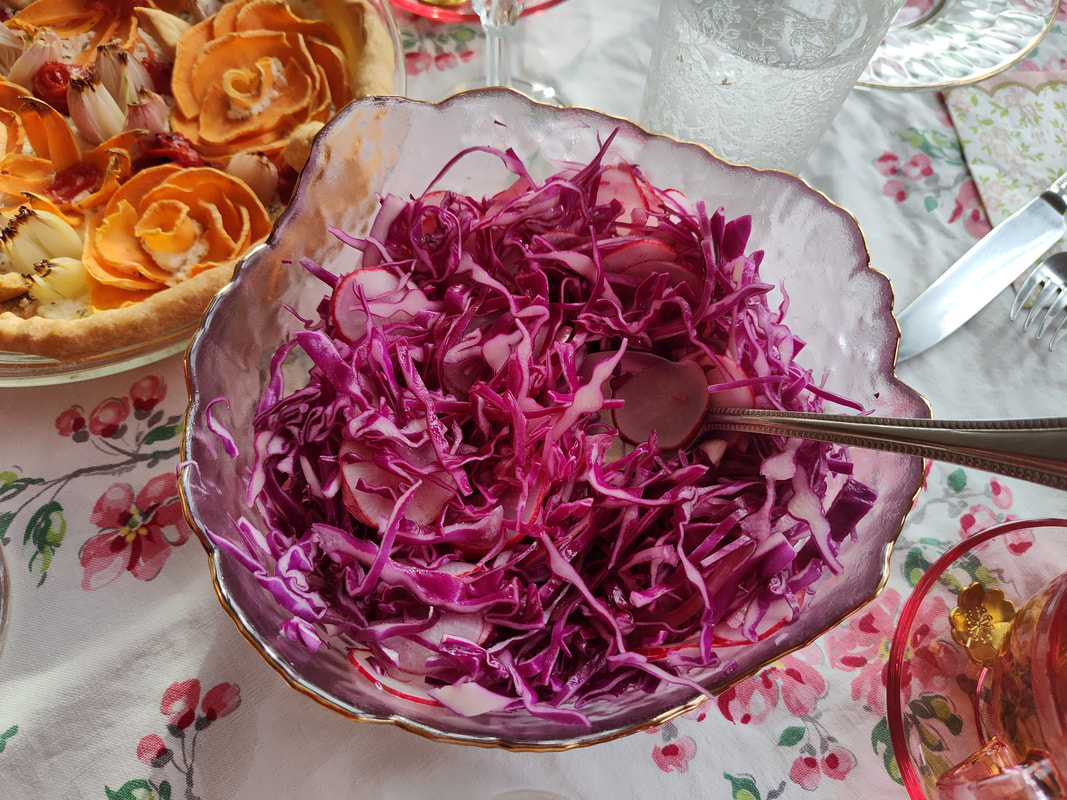
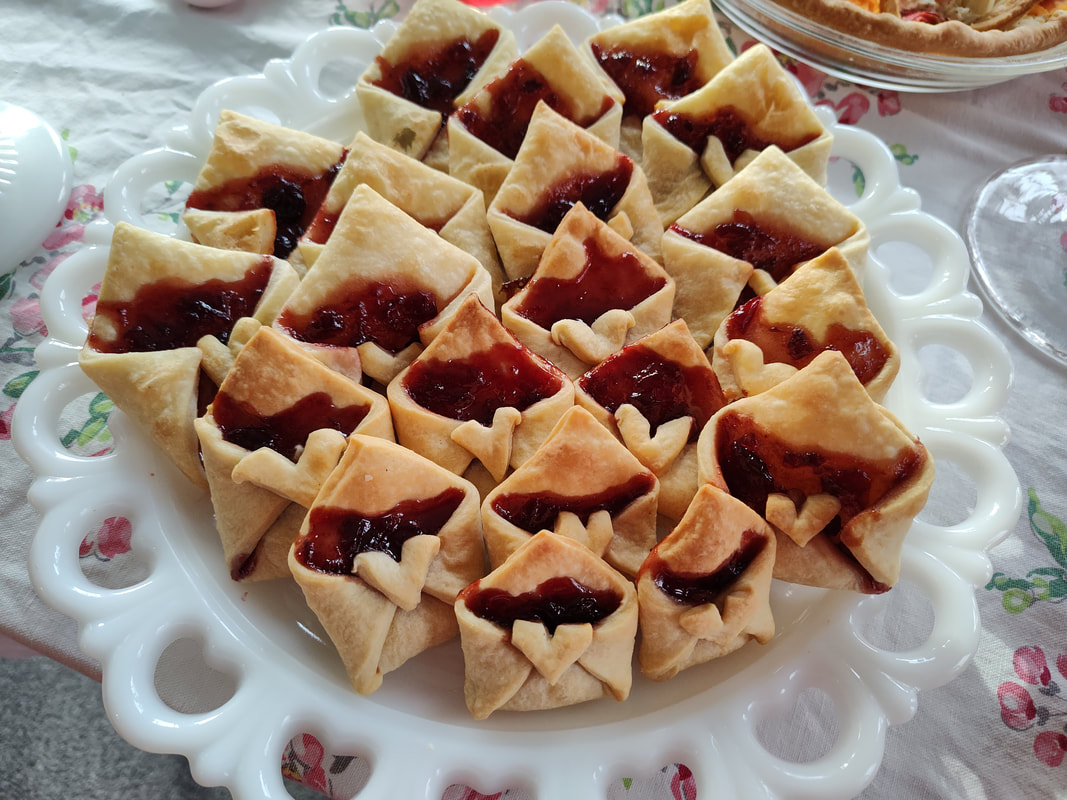
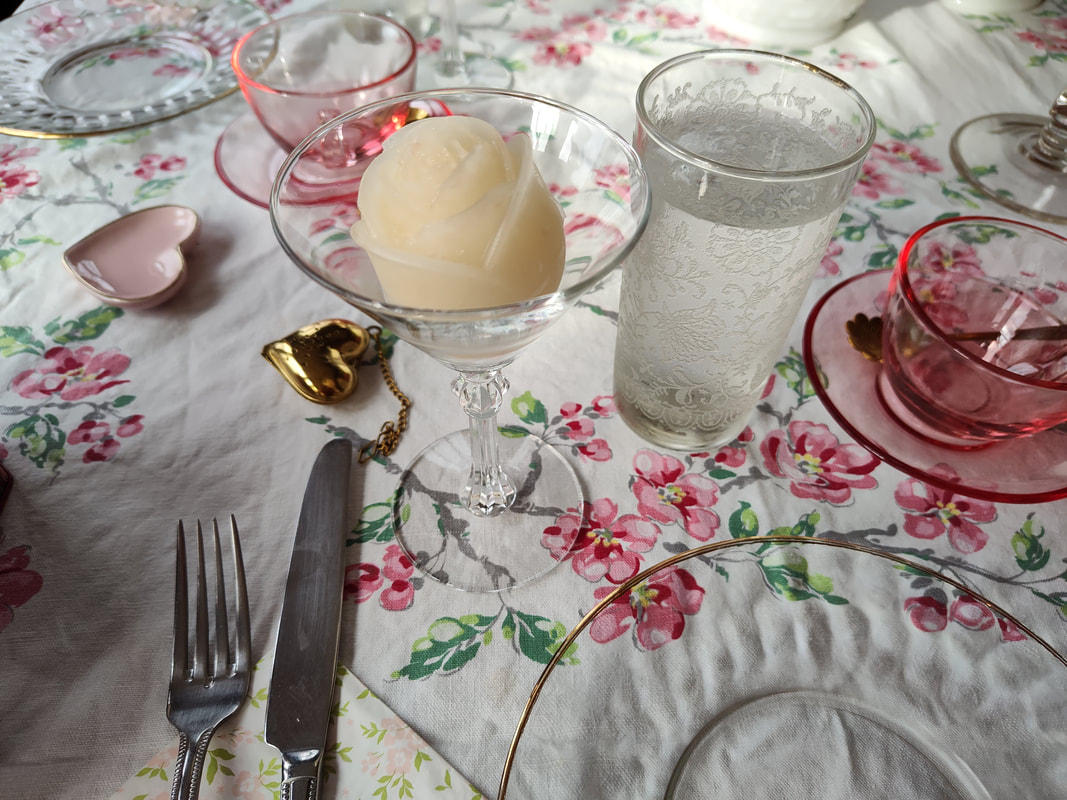
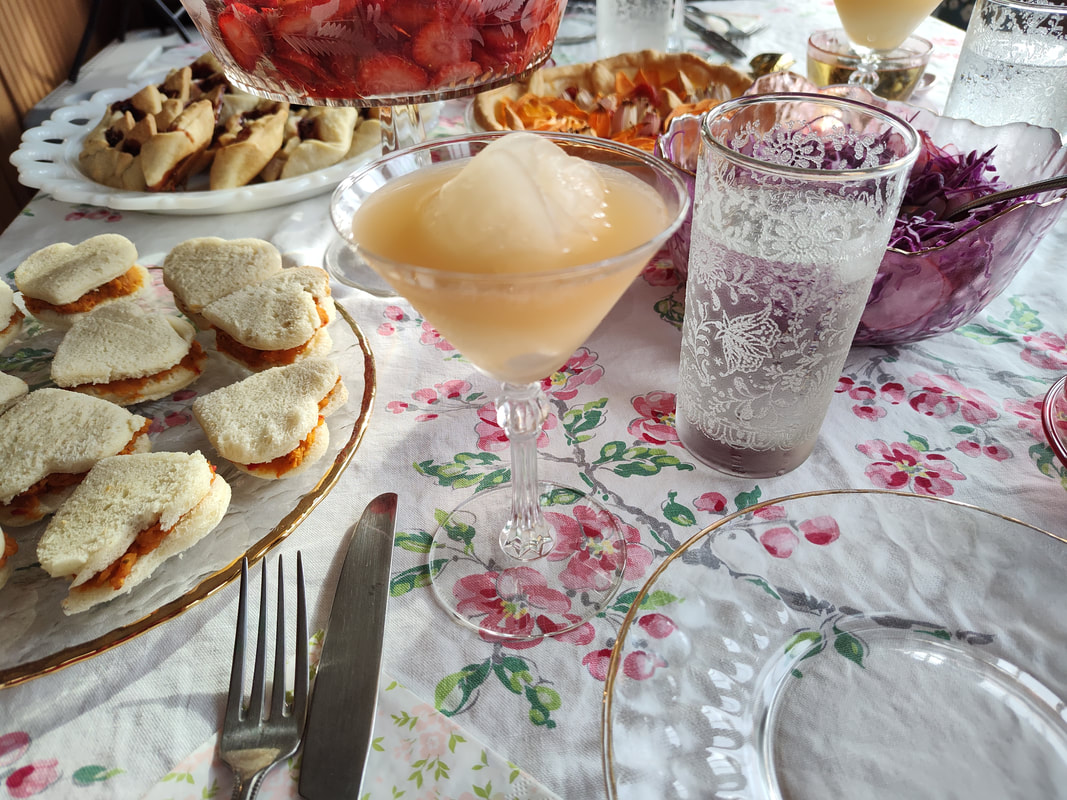
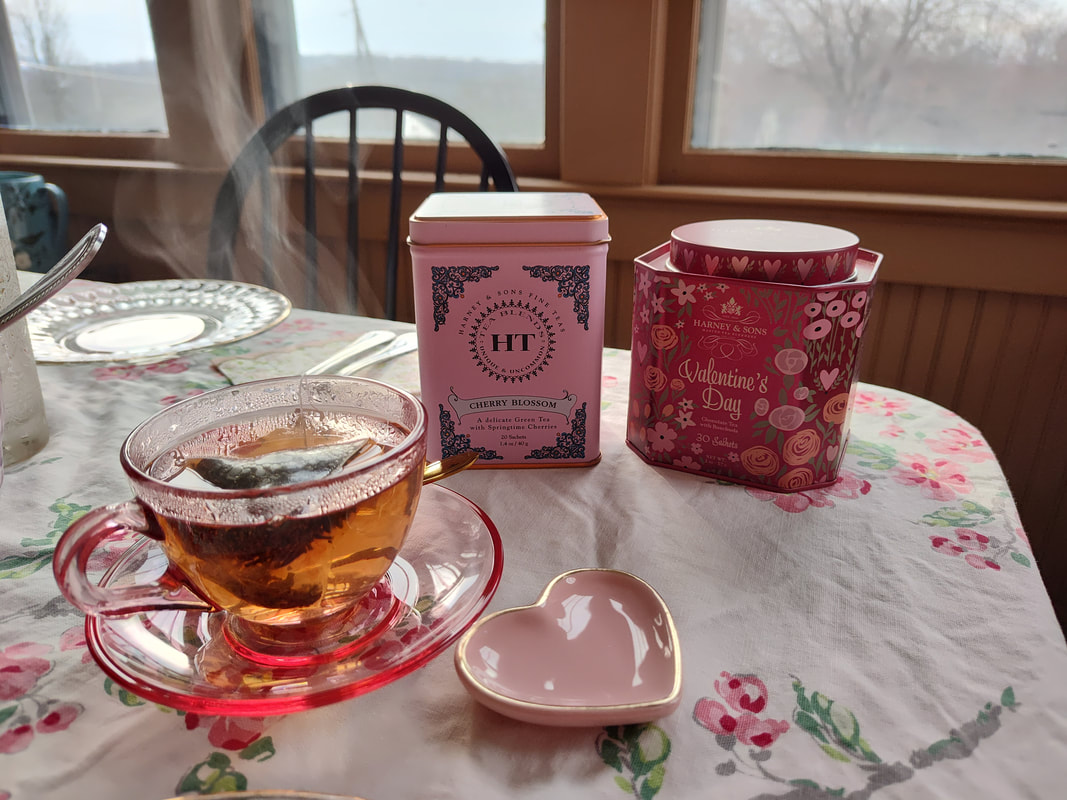
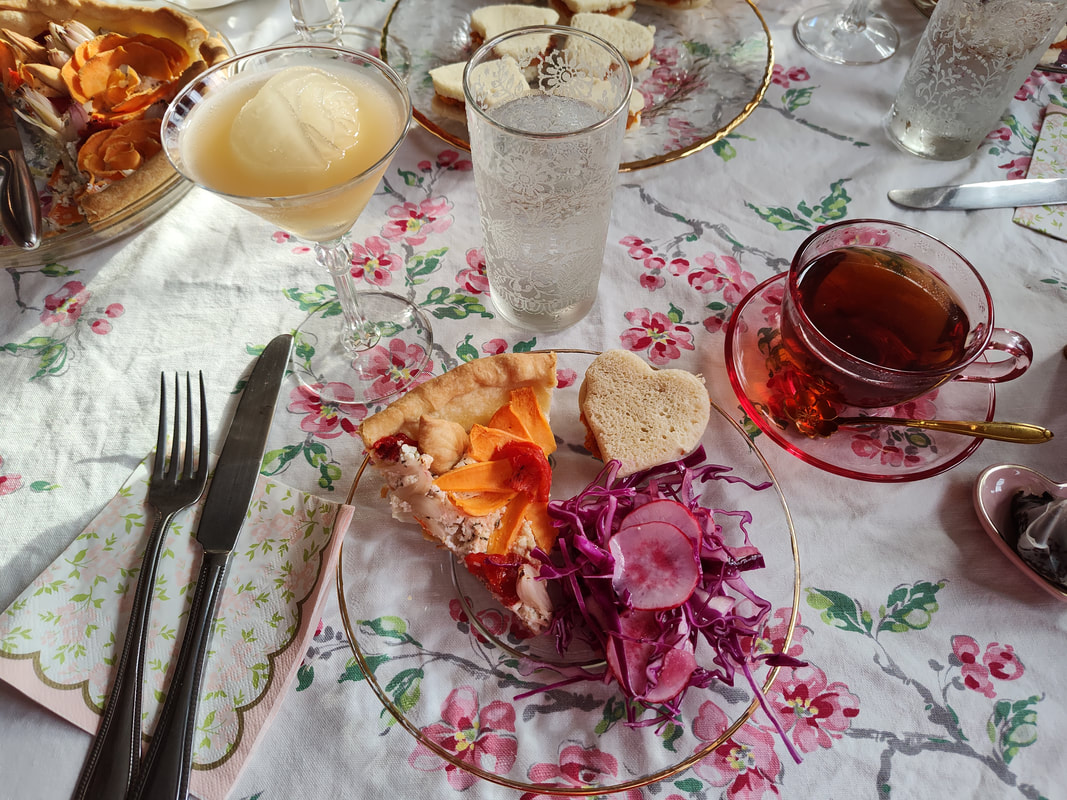
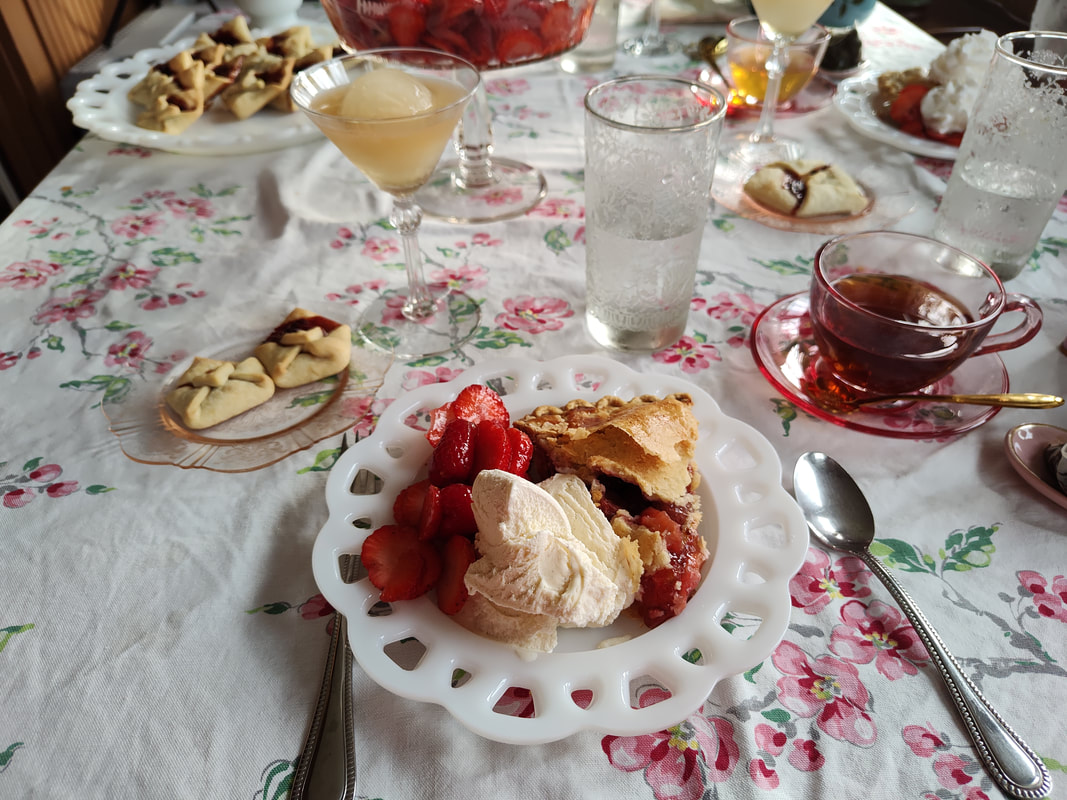
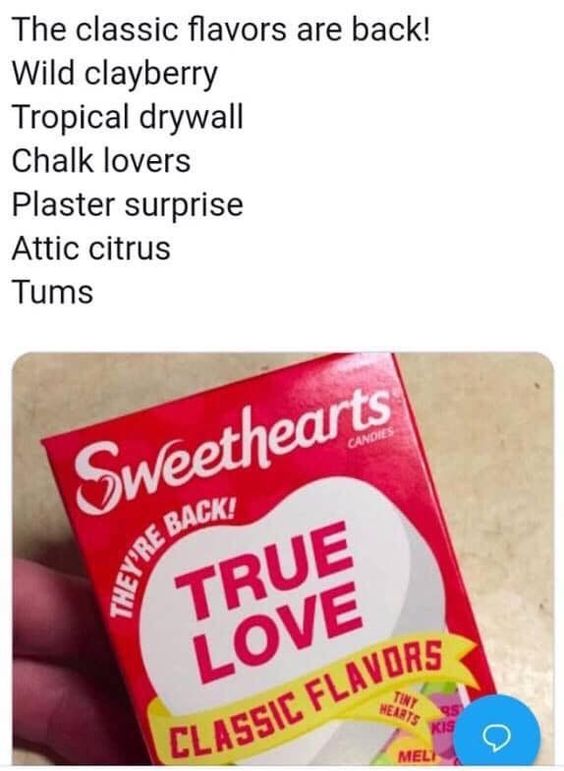
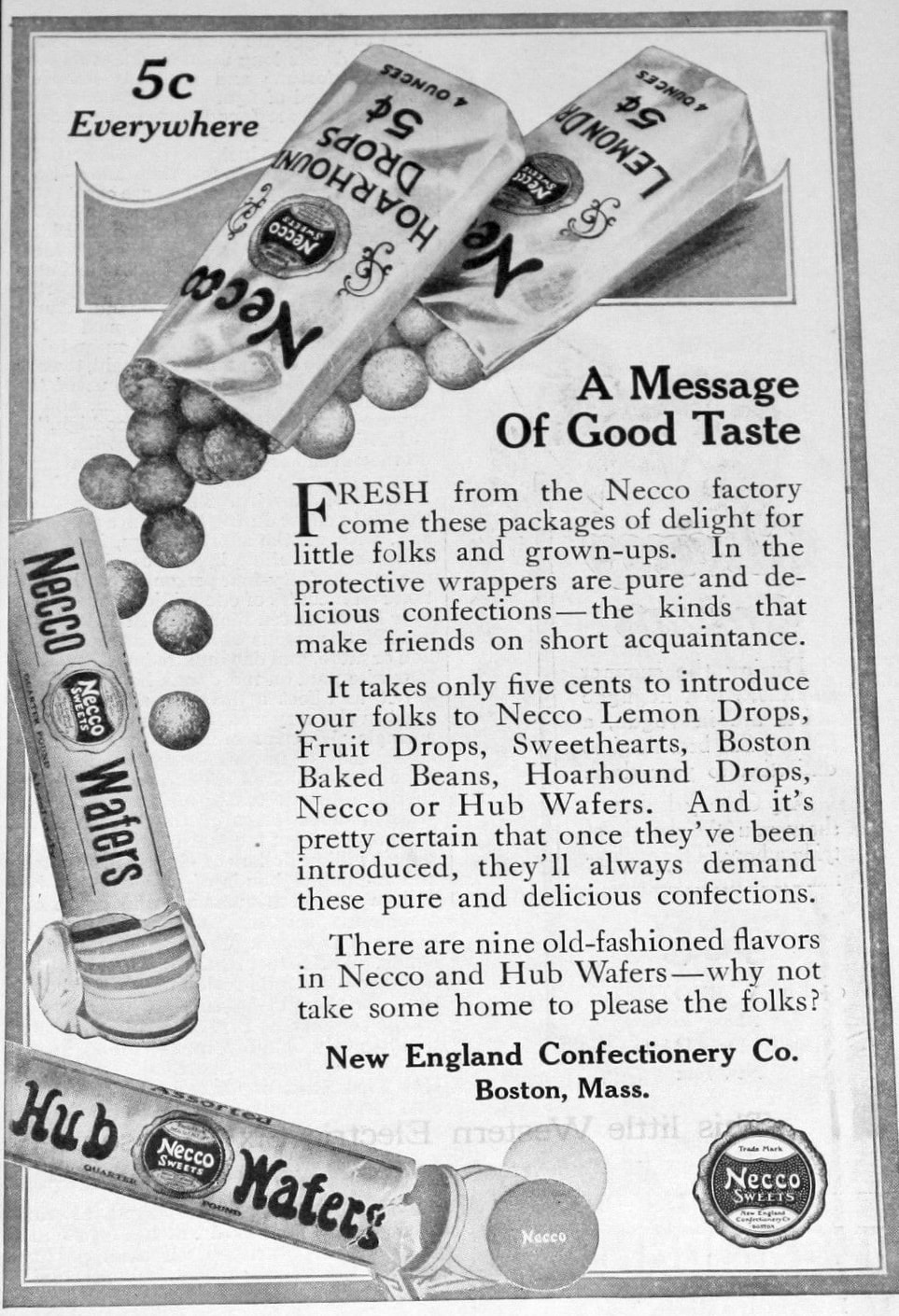
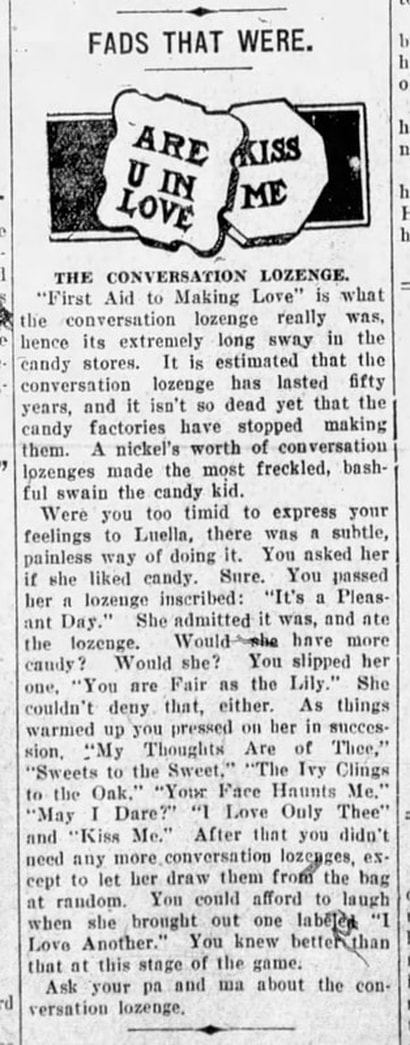
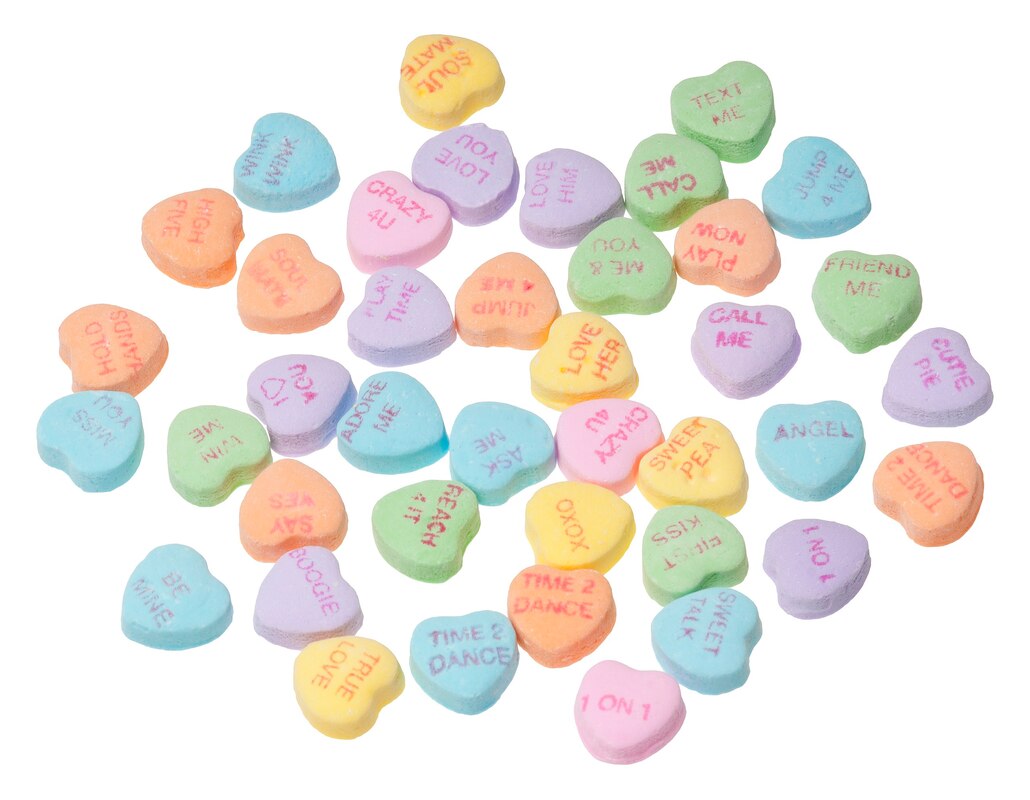
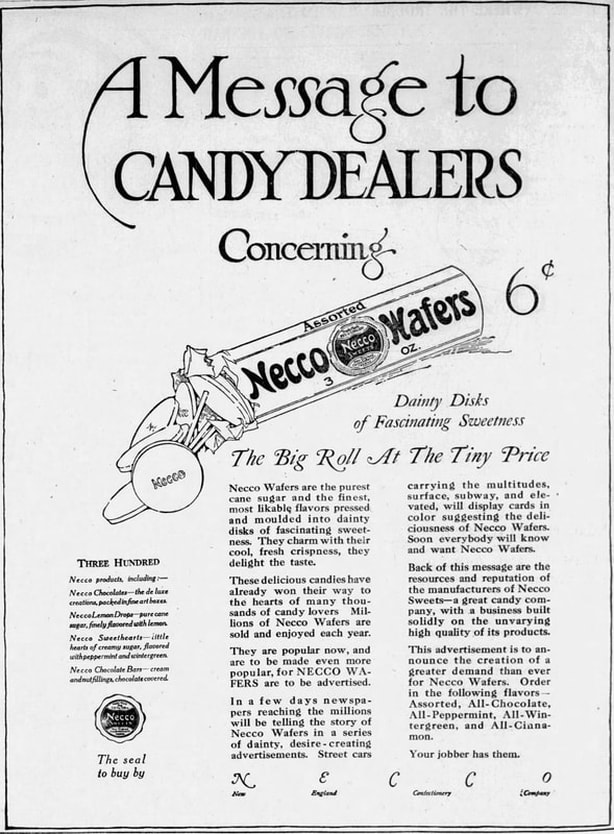
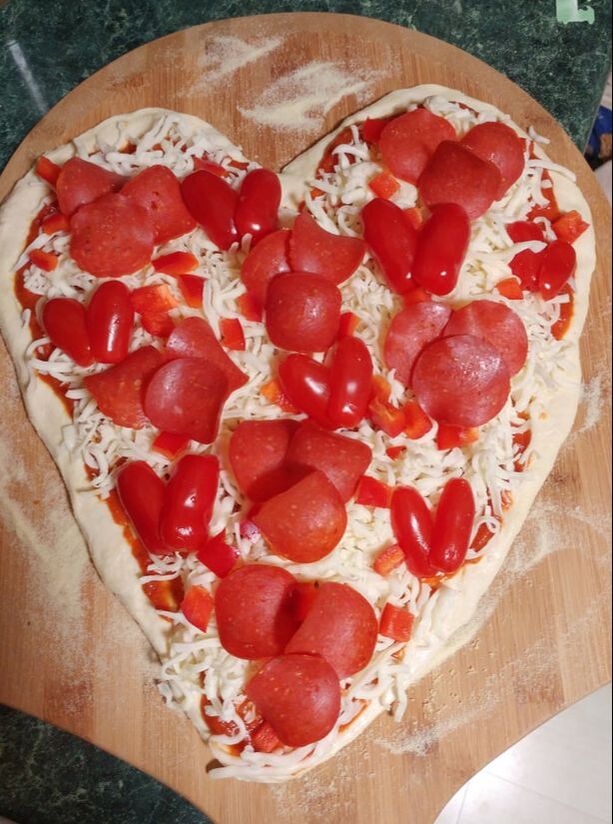
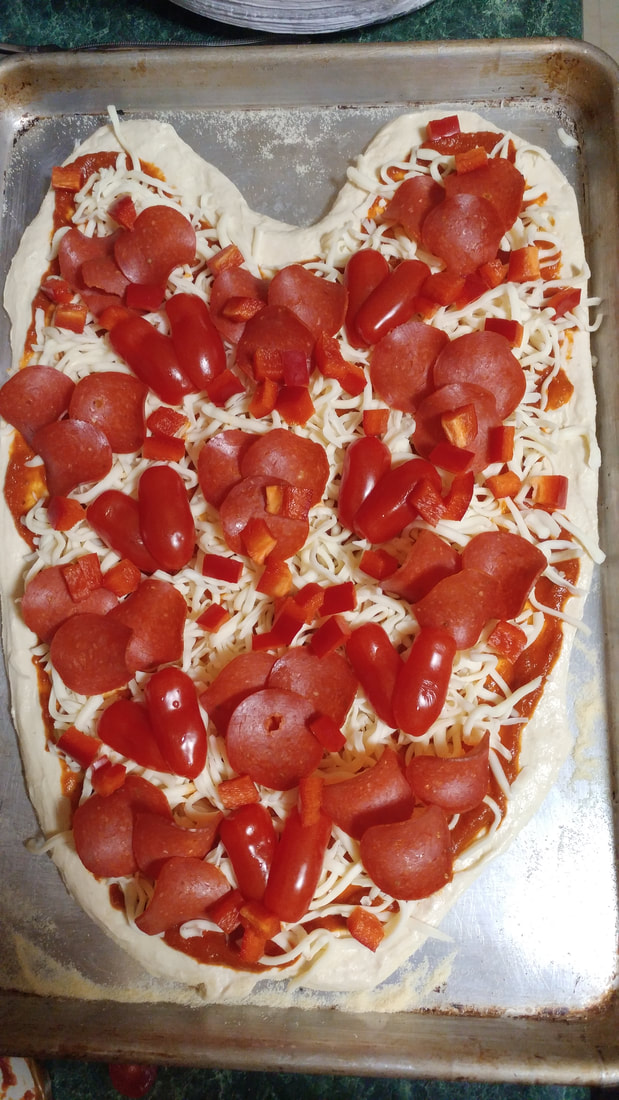
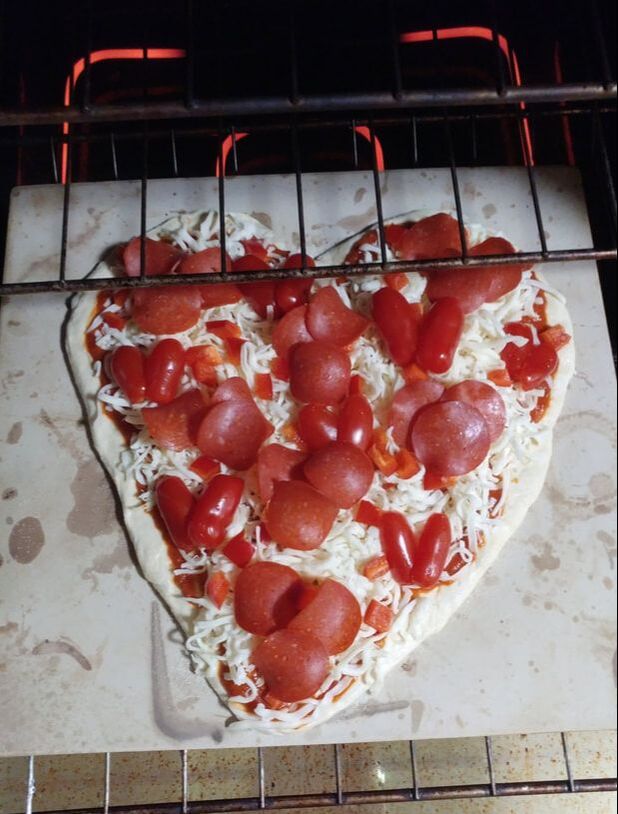
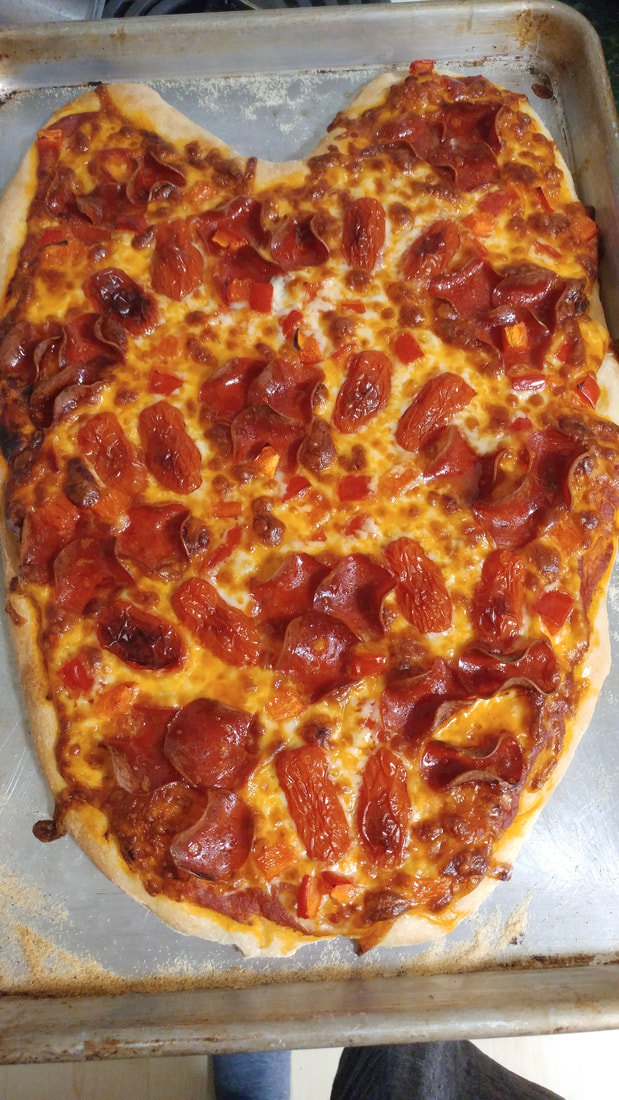
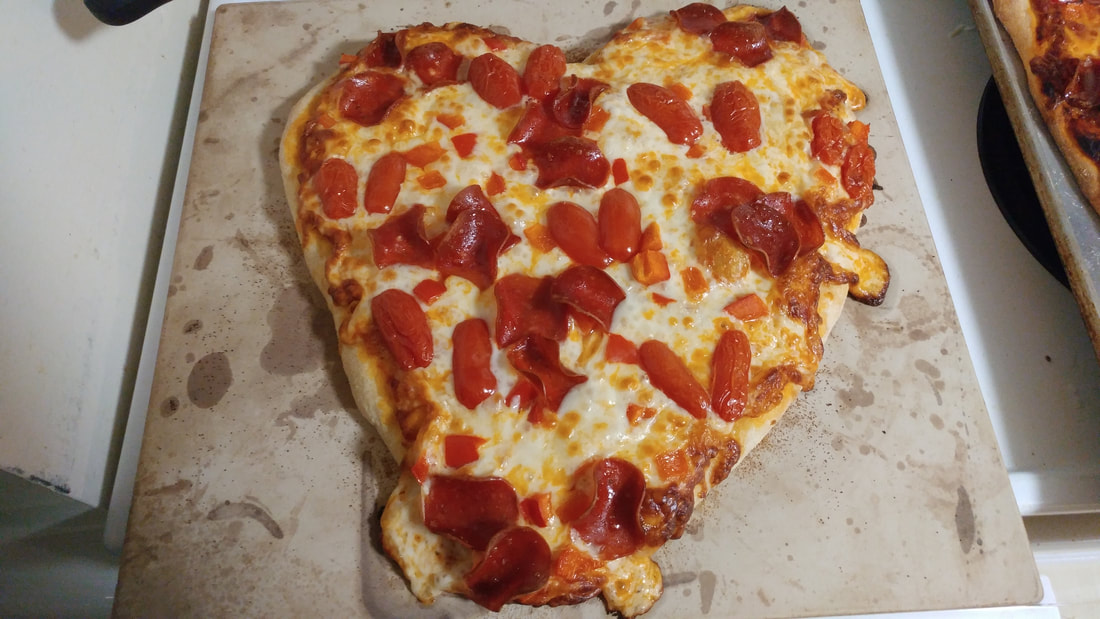
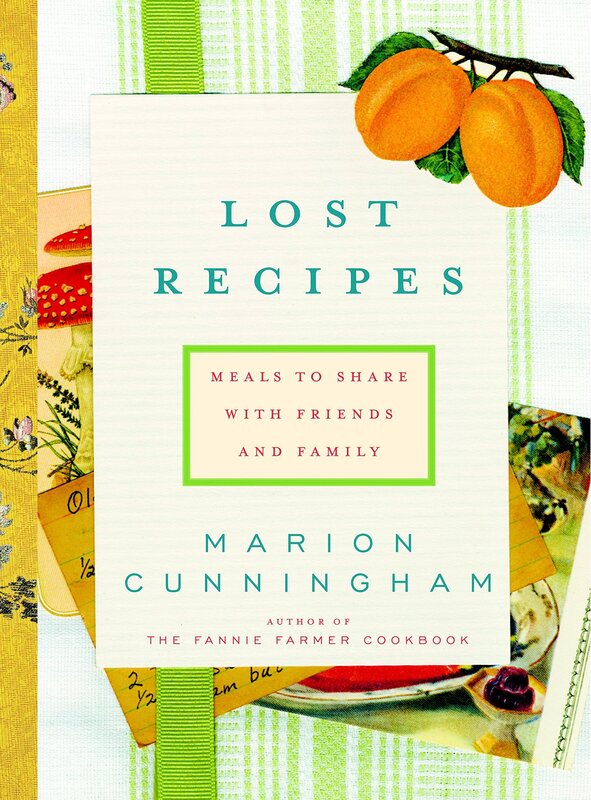
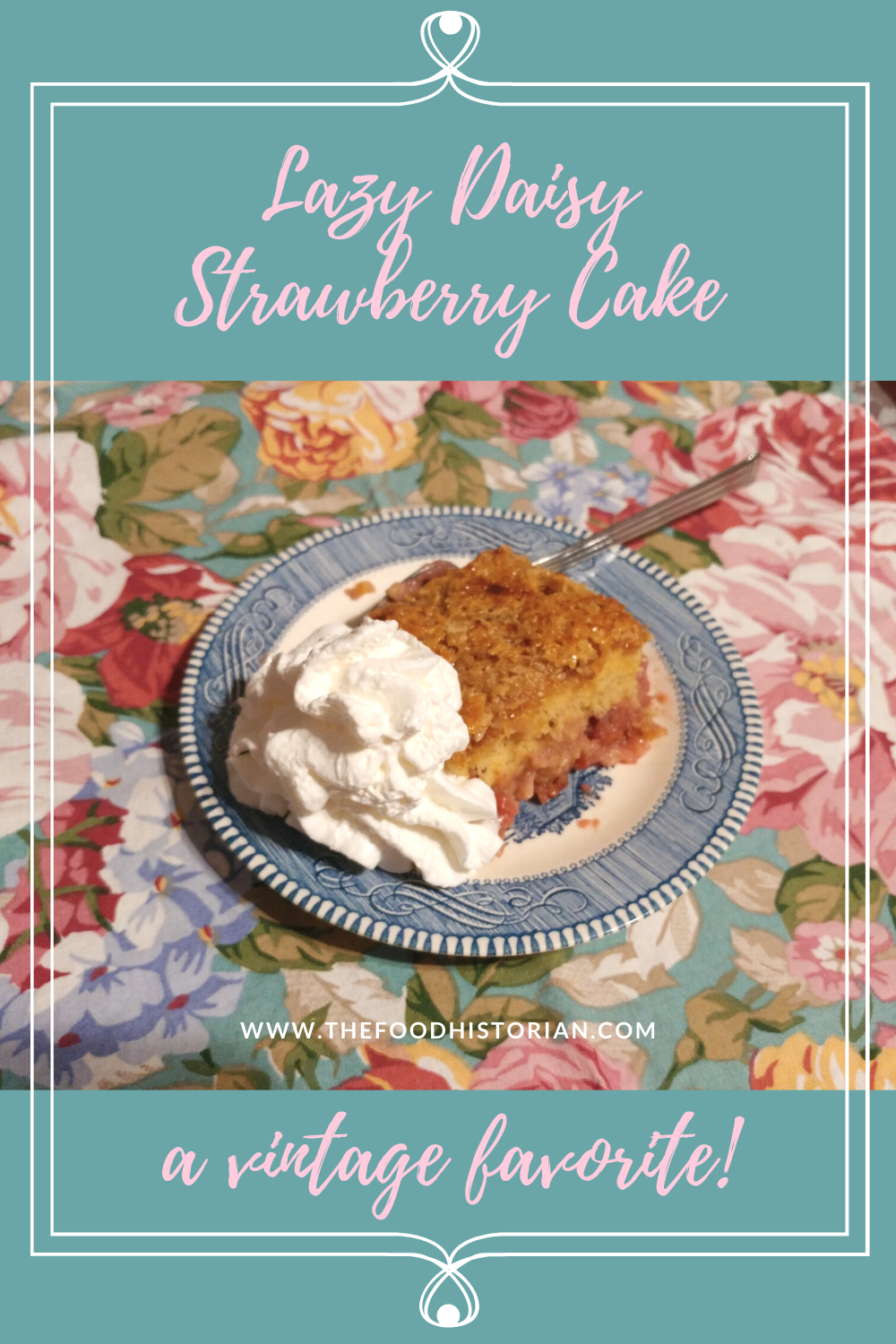
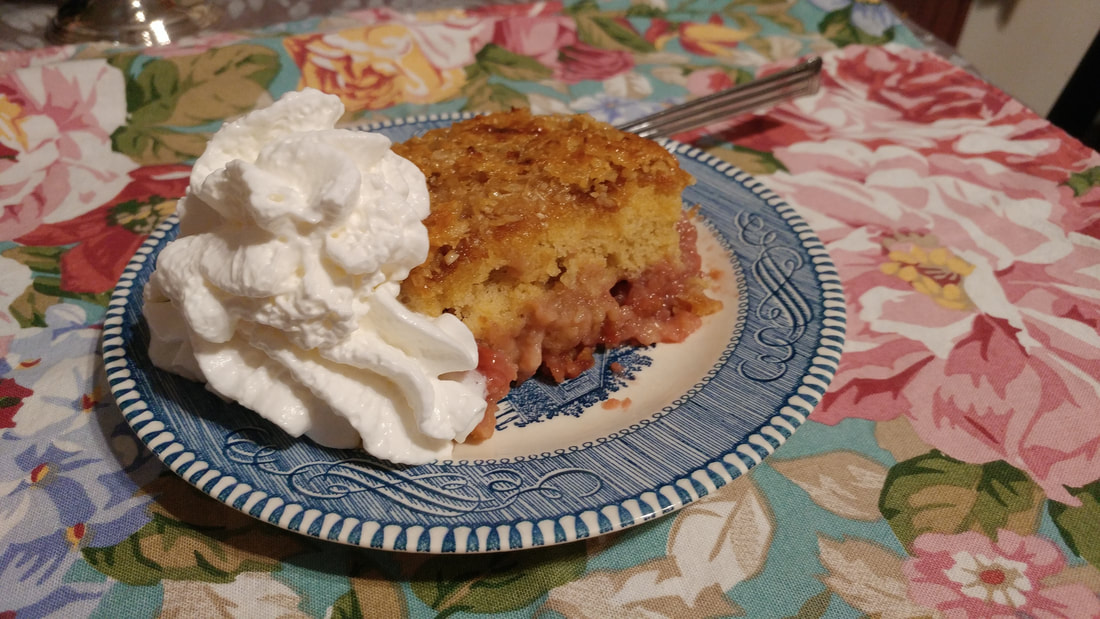

 RSS Feed
RSS Feed